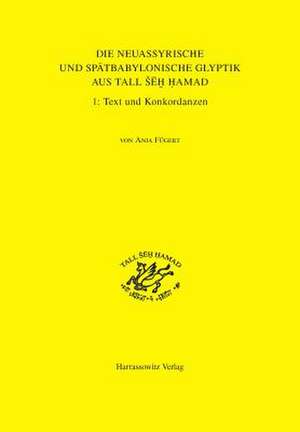Die Neuassyrische Und Spatbabylonische Glyptik Aus Tall Seh Hamad/Dur-Katlimmu: Berichte Der Ausgrabung Tall Seh Hamad / Dur-Katlimmu, cartea 16
de Limba Germană Hardback
Preț: 1118.72 lei
Preț vechi: 1532.50 lei
-27% Nou
Puncte Express: 1678
Preț estimativ în valută:
214.24€ • 218.63$ • 180.25£
214.24€ • 218.63$ • 180.25£
Indisponibil temporar
Doresc să fiu notificat când acest titlu va fi disponibil:
Se trimite...
Preluare comenzi: 021 569.72.76
Specificații
ISBN-13: 9783447102858
ISBN-10: 3447102853
Pagini: 815
Editura: Harrassowitz
Seria Berichte Der Ausgrabung Tall Seh Hamad / Dur-Katlimmu
ISBN-10: 3447102853
Pagini: 815
Editura: Harrassowitz
Seria Berichte Der Ausgrabung Tall Seh Hamad / Dur-Katlimmu







